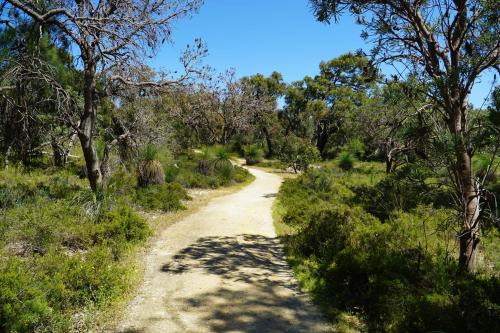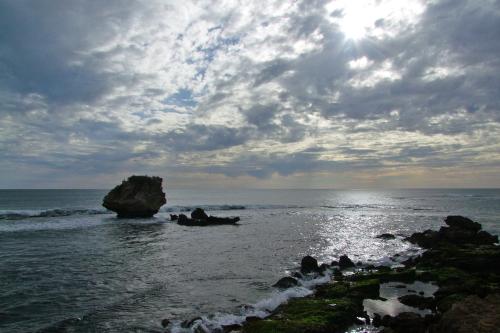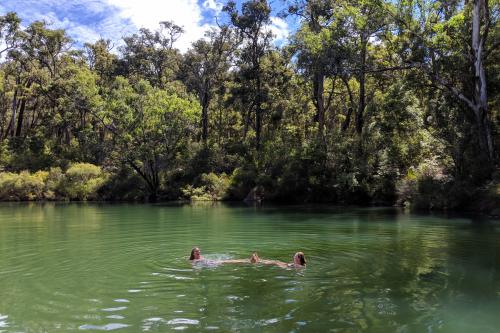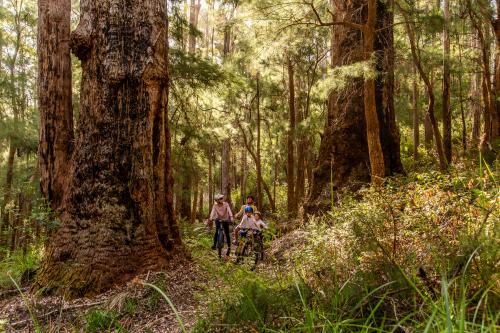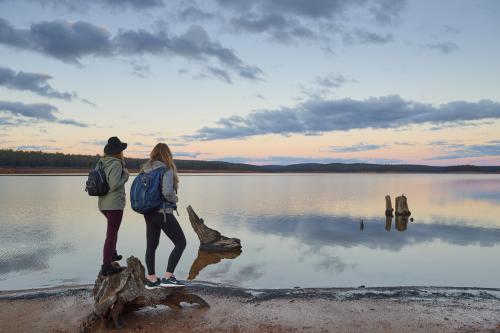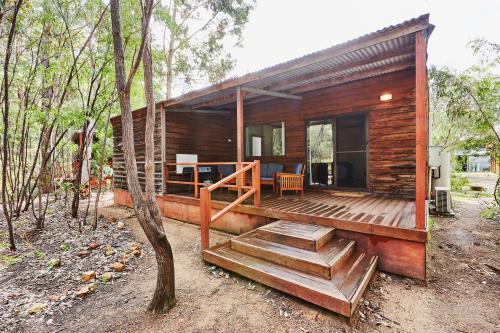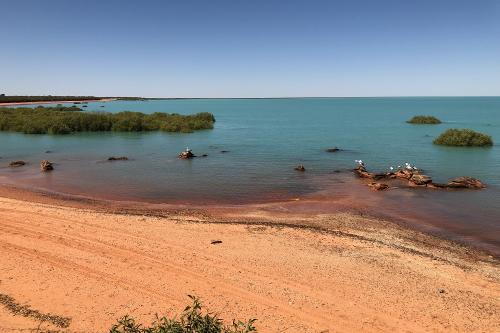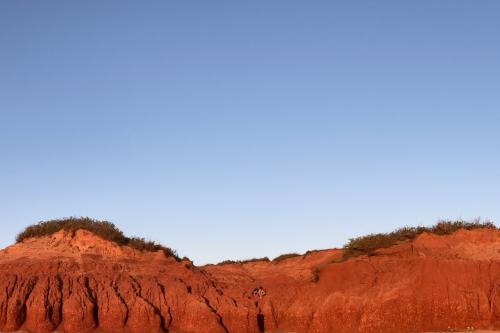You don't need mountains for mountain biking but you do need off-road trails. These include easy riding on wide trails with gentle gradients through to extreme adventure trails with very steep gradients, rough and slippery surfaces and big, unavoidable obstacles.
Mountain bikers identify a number of different disciplines of the sport. Most opportunities in parks are for XC (cross-country) riding. This includes both point-to-point and loop trails with ascents and descents on existing forestry tracks, former railway formations (rail trails) or purpose-built single track (trails wide enough for just one bike). There are also an increasing number of DH (downhill) trails, which are generally in more steep and difficult terrain and require more technical cycling ability and, are one-way only.
In WA, mountain bike trails are classified based on the technical difficulty of the trail, using the system described in the WA Mountain Bike Management Guidelines. The system is broadly consistent with the International Mountain Bike Association (IMBA) system. Ensure the trails you are planning to ride are suitable to you and your group’s skill and experience level. Check the trail classifications table before you ride.
The Dwellingup Adventure Trails network includes 35km of cross-country and downhill mountain bike trails suitable for riders of all levels. Wambenger Trails, located in the Collie River Valley, include a network of world-class mountain bike trails in jarrah and marri forest around the town of Collie. Download the Wambenger Trails App for more info - Apple or Google Play. Other trail networks can be found near Margaret River and Pemberton.
Stay up to date with all the new trails in planning and being built across the State at Trails WA Projects.
Find detailed information on mountain bike trails and trail networks at Trails WA and WestCycle.
For cycle touring enthusiasts, the Munda Biddi Trail is a long-distance cycle touring trail that traverses a number of parks on its route between Perth and Albany. Over 1000km in length, it includes a variety of XC trail types and a number of sections of sealed and unsealed roads in between parks.
Whatever trail you ride, your bike must be in good working order and suitable for the difficulty rating of the trail. You should have access to a first aid kit, toolkit and spares and know how to fix your bike out on the trail. Lots of extra protective equipment is available. You must wear a helmet and gloves and glasses are recommended. On more difficult trails you should consider a full-face helmet and body armour.
Occasionally, illegal trails are constructed in WA's parks. Please be aware and ride only on sanctioned mountain bike trails. Find out more about the importance of using approved trails and the efforts to maintain a safe and sustainable trail network.
For more information on how to prepare for and enjoy your ride see our Safety and Mountain biking safety advice.
Mountain bike clubs throughout the state run social and competitive rides, maintain existing trails and develop new ones. Details are available from WestCycle.
If you're planning a school excursion or outdoor education activity, find out all you need to know about group bookings and approvals at Outdoor in education parks and reserves.
